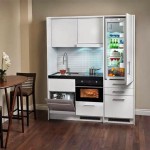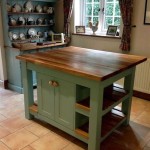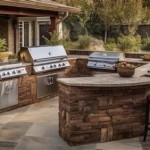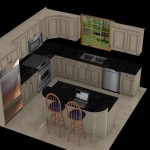Stainless Steel Two-Bowl Kitchen Sinks: A Comprehensive Guide
The kitchen sink is a central hub in any home, facilitating food preparation, dishwashing, and various cleaning tasks. Among the diverse options available, the stainless steel two-bowl kitchen sink stands out as a popular choice due to its durability, functionality, and aesthetic appeal. This article provides a comprehensive overview of stainless steel two-bowl kitchen sinks, exploring their advantages, materials, configurations, installation considerations, maintenance, and factors to consider when selecting the right model for a specific kitchen environment.
Stainless steel's inherent properties contribute significantly to the widespread adoption of this sink material. Its resistance to corrosion and staining, coupled with its ability to withstand high temperatures and impacts, ensures a prolonged lifespan. The non-porous surface of stainless steel also discourages bacterial growth, promoting a hygienic environment for food handling and dish cleaning. These characteristics, combined with the affordability and ease of maintenance, make stainless steel a practical and attractive option for homeowners and professional kitchens alike.
The two-bowl configuration offers enhanced versatility and efficiency compared to single-bowl alternatives. The dual basins allow for simultaneous completion of different tasks, such as washing on one side and rinsing on the other, or soaking dishes in one bowl while utilizing the other for food preparation. This separation of functions streamlines workflow and maximizes the use of available sink space, particularly beneficial in kitchens with limited counter space or high usage demands.
Advantages of Stainless Steel Two-Bowl Sinks
The popularity of stainless steel two-bowl kitchen sinks is largely attributable to a compelling array of advantages that cater to diverse needs and preferences. These advantages encompass aspects of durability, functionality, hygiene, aesthetics, and overall value proposition.
Durability and Longevity: Stainless steel, an alloy primarily composed of iron, chromium, and nickel, exhibits exceptional resistance to corrosion, rust, and staining. This inherent durability ensures that the sink maintains its structural integrity and aesthetic appeal over an extended period, even with frequent exposure to water, detergents, and abrasive cleaning products. Furthermore, stainless steel is resistant to thermal shock, meaning it can withstand rapid temperature changes without cracking or warping. The impact resistance of stainless steel also minimizes the risk of dents or scratches from accidental drops or impacts.
Enhanced Functionality: The dual-bowl design provides a significant improvement in functionality compared to single-bowl sinks. It allows for the segregation of tasks, such as washing vegetables in one bowl while simultaneously rinsing dishes in the other. This separation prevents cross-contamination and streamlines the cleaning process. The availability of two separate spaces also facilitates more efficient multitasking, allowing for optimal utilization of the sink area, especially during meal preparation and cleanup.
Hygiene and Ease of Cleaning: Stainless steel's non-porous surface prevents the absorption of liquids and food particles, making it extremely hygienic. This prevents the build-up of bacteria, mold, and mildew, minimizing the risk of contamination. The smooth, non-reactive surface also makes cleaning remarkably easy. Soap and water, along with a soft cloth or sponge, are generally sufficient to remove most stains and grime. The resistance to staining also ensures that the sink maintains its clean and bright appearance over time, requiring minimal effort for upkeep.
Aesthetic Versatility: Stainless steel's neutral and sleek appearance complements a wide range of kitchen styles, from contemporary and minimalist to traditional and rustic. The reflective surface of stainless steel adds a touch of elegance and brightness to the kitchen. Furthermore, stainless steel sinks are available in various finishes, such as brushed, polished, and satin, allowing homeowners to choose a finish that best matches their design preferences and existing kitchen fixtures. This versatility ensures that the sink seamlessly integrates into the overall aesthetic of the kitchen space.
Value and Affordability: Stainless steel sinks offer a compelling balance of quality, durability, and affordability. While higher-end models with thicker gauges and premium features may command a higher price, the overall cost of stainless steel sinks remains competitive compared to other materials such as granite or fireclay. The long lifespan of stainless steel, coupled with its ease of maintenance, translates to significant long-term cost savings. This combination of affordability and longevity makes stainless steel a wise investment for homeowners seeking a durable and functional kitchen sink.
Selecting the Right Stainless Steel Two-Bowl Sink
Choosing the optimal stainless steel two-bowl sink requires careful consideration of factors such as gauge, bowl configuration, mounting style, size, and additional features. Evaluating these aspects ensures that the selected sink aligns with specific needs, preferences, and kitchen dimensions.
Gauge: The gauge of the stainless steel refers to its thickness. A lower gauge number indicates a thicker steel. Thicker steel is more durable, resistant to dents and noise, and offers a longer lifespan. Common gauges for kitchen sinks range from 16 to 22. A 16-gauge sink is considered a premium option, offering superior durability and noise reduction. An 18-gauge sink provides a good balance of durability and affordability, while 20- and 22-gauge sinks are generally more budget-friendly options that may be suitable for lighter usage.
Bowl Configuration: The bowl configuration refers to the size and shape of the two basins. Common configurations include equal-sized bowls, a large-and-small bowl combination, and offset bowls. Equal-sized bowls offer maximum versatility, allowing for easy switching between tasks. A large-and-small bowl combination is ideal for situations where one bowl is primarily used for washing large pots and pans while the other is used for smaller items. Offset bowls provide a degree of asymmetry, which can be aesthetically pleasing in certain kitchen designs. The choice of bowl configuration should be based on individual usage patterns and the types of tasks typically performed in the kitchen.
Mounting Style: The mounting style refers to how the sink is attached to the countertop. The most common mounting styles are top-mount (drop-in), undermount, and farmhouse (apron-front). Top-mount sinks are installed by dropping them into a pre-cut hole in the countertop, making them relatively easy to install. Undermount sinks are installed beneath the countertop, creating a seamless and hygienic transition. Farmhouse sinks feature an exposed front apron and require specialized cabinetry for support. The choice of mounting style depends on personal preference, countertop material, and installation budget.
Size and Dimensions: The size and dimensions of the sink should be carefully considered to ensure they are compatible with the available counter space and cabinet dimensions. Measuring the existing sink or countertop opening is crucial before making a purchase. Consider the depth of the bowls, as deeper bowls are more convenient for washing large pots and pans. Also, factor in the overall width and length of the sink to ensure it does not obstruct the workspace or interfere with other kitchen appliances.
Additional Features: Various additional features can enhance the functionality and convenience of a stainless steel two-bowl sink. These features may include sound dampening pads to reduce noise during dishwashing, pre-drilled holes for faucet and accessory installation, and included accessories such as drain strainers and bottom grids. Sound dampening pads are particularly beneficial in open-concept kitchens where noise can be a concern. Pre-drilled holes simplify the installation process. Bottom grids protect the sink surface from scratches and dents. Considering these optional features allows for customization and optimization of the sink to meet specific needs.
Installation and Maintenance of Stainless Steel Two-Bowl Sinks
Proper installation and regular maintenance are essential for maximizing the lifespan and performance of a stainless steel two-bowl kitchen sink. Adhering to manufacturer's instructions during installation ensures a secure and leak-free connection, while implementing simple maintenance practices preserves the sink's appearance and hygiene.
Installation Considerations: Professional installation is generally recommended, particularly for undermount and farmhouse sinks, to ensure proper sealing and support. Read and understand the manufacturer's instructions thoroughly before beginning the installation process. Ensure that the countertop opening is accurately sized to accommodate the sink. Use appropriate sealants and adhesives to create a watertight seal between the sink and the countertop. Connect the drain plumbing securely, ensuring that there are no leaks. If installing a garbage disposal, ensure that it is compatible with the sink drain and that it is properly installed.
Cleaning and Maintenance: Regular cleaning with mild soap and water is typically sufficient to maintain the sink's appearance. Avoid using abrasive cleaners or scouring pads, as they can scratch the stainless steel surface. Rinse the sink thoroughly after each use to remove food particles and detergent residue. To remove water spots, use a stainless steel cleaner or a solution of vinegar and water. To prevent hard water stains, dry the sink after each use. For stubborn stains, use a paste of baking soda and water or a commercially available stainless steel cleaner specifically designed for removing tough stains. Avoid leaving acidic foods or liquids, such as lemon juice or vinegar, in the sink for extended periods, as they can potentially damage the finish.
Preventing Damage: Avoid dropping heavy objects into the sink, as this can cause dents or scratches. Use bottom grids to protect the sink surface from scratches and dents caused by dishes and utensils. Avoid using steel wool or abrasive cleaners, as they can damage the stainless steel finish. Do not use bleach or harsh chemicals, as they can discolor or corrode the stainless steel. If the sink becomes scratched, use a stainless steel polish to minimize the appearance of the scratches.
Addressing Common Issues: Rust spots can sometimes appear on stainless steel sinks, especially in areas with hard water. These rust spots are typically caused by mineral deposits and can be removed with a stainless steel cleaner or a solution of vinegar and water. Water spots can be prevented by drying the sink after each use. Clogging can be prevented by using drain strainers to catch food particles and debris. Regularly flush the drain with hot water to remove any build-up.

Glacier Bay 33 In Drop 50 Double Bowl 22 Gauge Stainless Steel Kitchen Sink Vt3322a06

Buy Premium Stainless Steel Double Bowl Kitchen Sink Kraus Usa

Ruvati 36 Inch Low Divide Undermount 60 40 Double Bowl 16 Gauge Stainless Steel Kitchen Sink Rvh7417 Usa

Noah S Collection 33 Brushed Stainless Steel Double Bowl Undermount Sink

Kohler Verse 33 In Drop Double Bowl 20 Gauge Stainless Steel Kitchen Sink With 4 Holes K Rh5267 Na The Home

Empire Industries Sp15l 32 Inch Double Bowl Undermount Kitchen Sink With High Capacity Basin Soundproofing Technology And Corrosion Resistant Large On Left

32 Low Divide Offset Undermount Stainless Steel Double Bowl Kitchen Sink Ld 3221

Ruvati 28 Inch Low Divide Undermount Tight Radius 60 40 Double Bowl 16 Gauge Stainless Steel Kitchen Sink Rvh7255

Shop 40 60 Double Bowl Kitchen Farm Sink Online Kraus

Karran U 5050 Undermount Stainless Steel 32 In 50 Double Bowl Kitchen Sink








